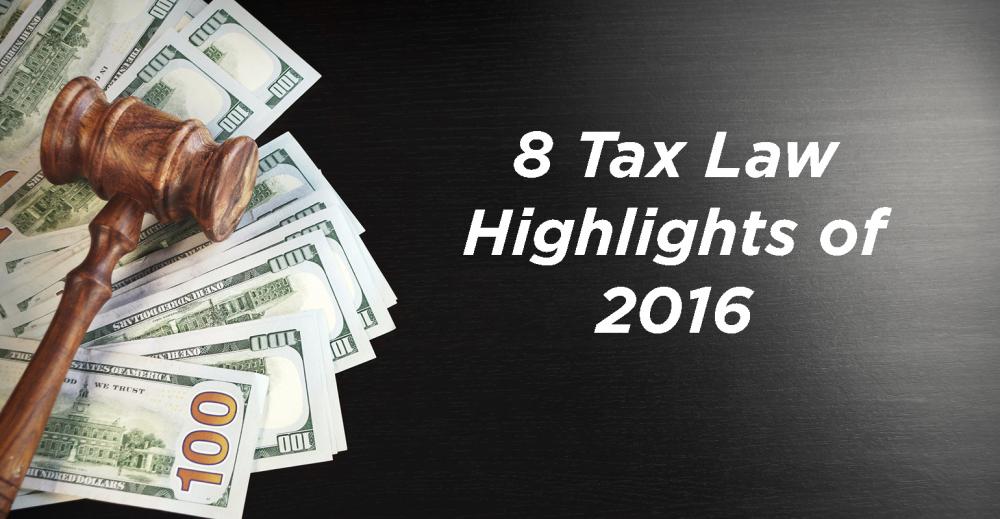1 9
1 9
The Treasury issued proposed regulations under Internal Revenue Code Sections 1014 and 6035 (among others) which would implement the new basis reporting requirements that became law in July 2015.
Meant to clarify the already confusing basis reporting requirements that executors face, these regulations mostly manage to do the exact opposite. From creating doubt as to whom exactly reporting statements must be furnished, to actually extending reporting requirements beyond executors to certain beneficiaries as well, the potential pitfalls here are numerous.
There were two interesting cases involving the inclusion of assets held in family limited partnerships (FLPs) in a decedent’s estate that both came to a similar conclusion: Formalities matter.
In both Holliday v. Comm’r and Estate of Beyer et al., the IRS was found able to reach assets held in FLPs largely because the families in question failed to follow formalities required to adequately create a factual record in support of their claimed non-tax purposes for creating the partnerships. If you can’t bother to acknowledge FLP formalities and structures, then the government likely won’t bother to acknowledge your FLP.
For all estate tax returns filed after June 1, 2015, the IRS will only issue estate tax closing letters by request of the taxpayer (that is, the estate). If a taxpayer doesn’t wish to request an estate tax closing letter, s/he may instead obtain an estate tax account transcript.
There are two ways to access the transcript: (1) registered tax professionals can access it online if they have an executed Form 2848 on file, or (2) the estate can submit Form 4506-T by fax or mail.
In Rev. Proc. 2016-47, the IRS created a do-it-yourself process that allows some taxpayers who were unable to complete a rollover from one retirement plan to another within the required time to implement the rollover without it being considered a taxable distribution.
A taxpayer who’s missed making the rollover within the required 60 days can certify to the plan administrator that s/he was unable to do so for certain reasons. The plan administrator can rely on that certification alone and then accept the rollover.
This process will be a great help for taxpayers who’ve been unable to complete rollovers within the 60-day period because of administrative errors, which are often the main culprits interfering with timely rollovers.
Fifteen years ago, the IRS established procedures for when it would disregard a Qualified Terminal Interest Property trust (QTIP) election that wasn’t necessary to eliminate estate tax. This rule was actually intended to protect and benefit taxpayers. At that time, a QTIP election that was unnecessary most likely provided little benefit with potentially significant adverse tax consequences.
However, in 2010, with the introduction of portability, executors of estates may in fact wish to make QTIP elections, even if unnecessary to avoid tax, to take advantage of portability.
Now, Rev. Proc. 2016-49 provides some added flexibility for taxpayers to reflect this new reality.
In Bank of America v. Comm’r., the Supreme Judicial Court of Massachusetts upheld a decision which ruled that Bank of America was an inhabitant of the state even though it wasn’t domiciled there.
Massachusetts imposes a fiduciary income tax on resident trusts, and to be considered a resident trust, several requirements must be met. One of those requirements is that at least one trustee must be an inhabitant of the state.
Though this decision only affects Massachusetts, it could have wide-ranging implications if other states adopt similar rationales.
The Treasury released proposed regulations regarding lapses of voting and liquidation rights and transfers of interests in closely held entities. The proposed regulations expand the types of restrictions that will be ignored when valuing a transfer, thereby eliminating the justifications for various commonly used discounts. Section 2704 generally applies to interests in corporations and partnerships; the proposed regulations clarify that they would also apply to LLCs.
Further information about these potential changes can be found here.
For an estate of any decedent dying in calendar year 2017, the basic exclusion amount is $5.49 million (a $40,000 increase) for determining the amount of the unified credit against gift and estate tax. The exemption for GST tax will also be $5.49 million.
The annual gift tax exclusion remains the same. For calendar year 2017, the first $14,000 of gifts to any person isn’t included in the total amount of taxable gifts made during that year.

